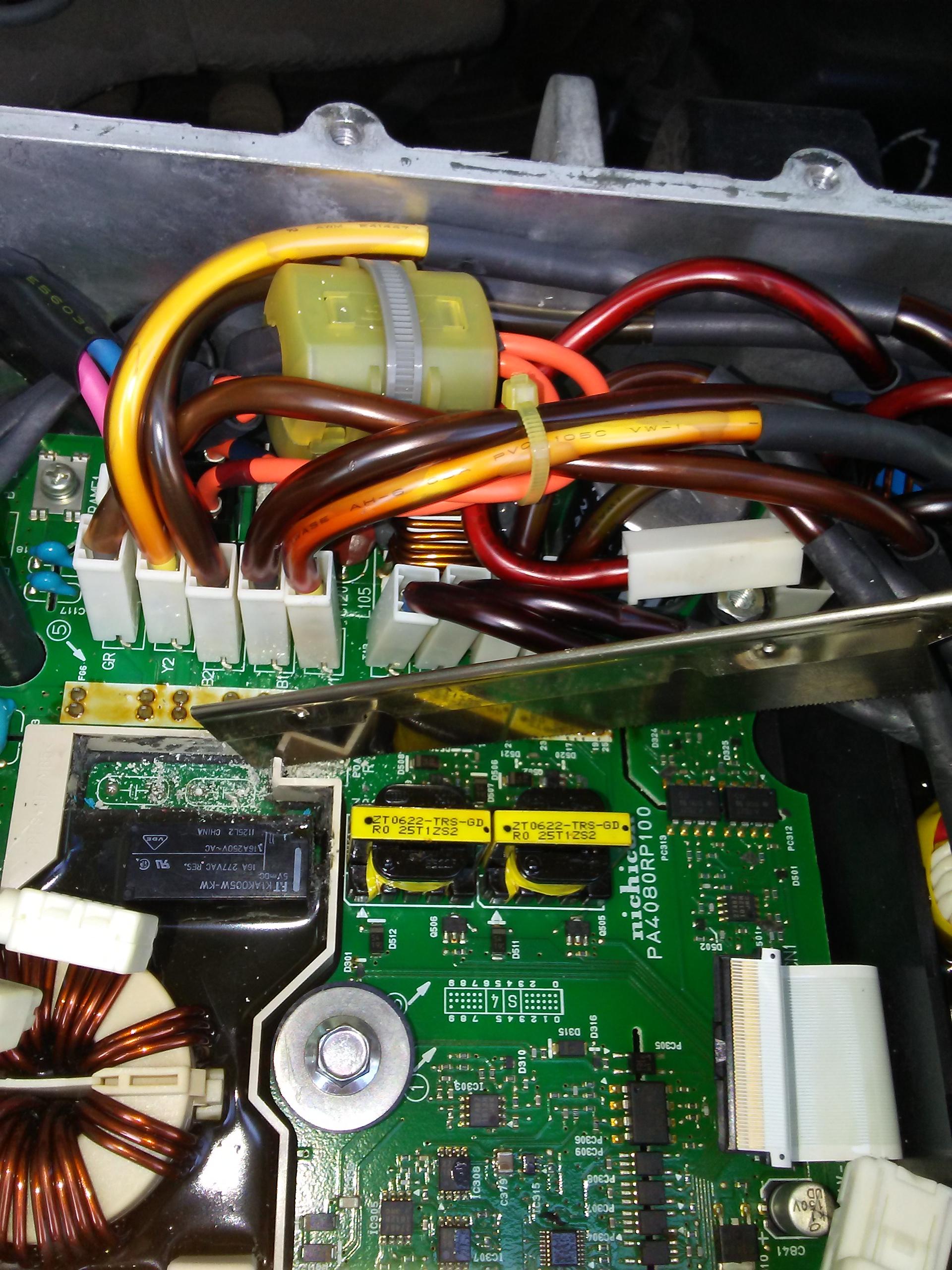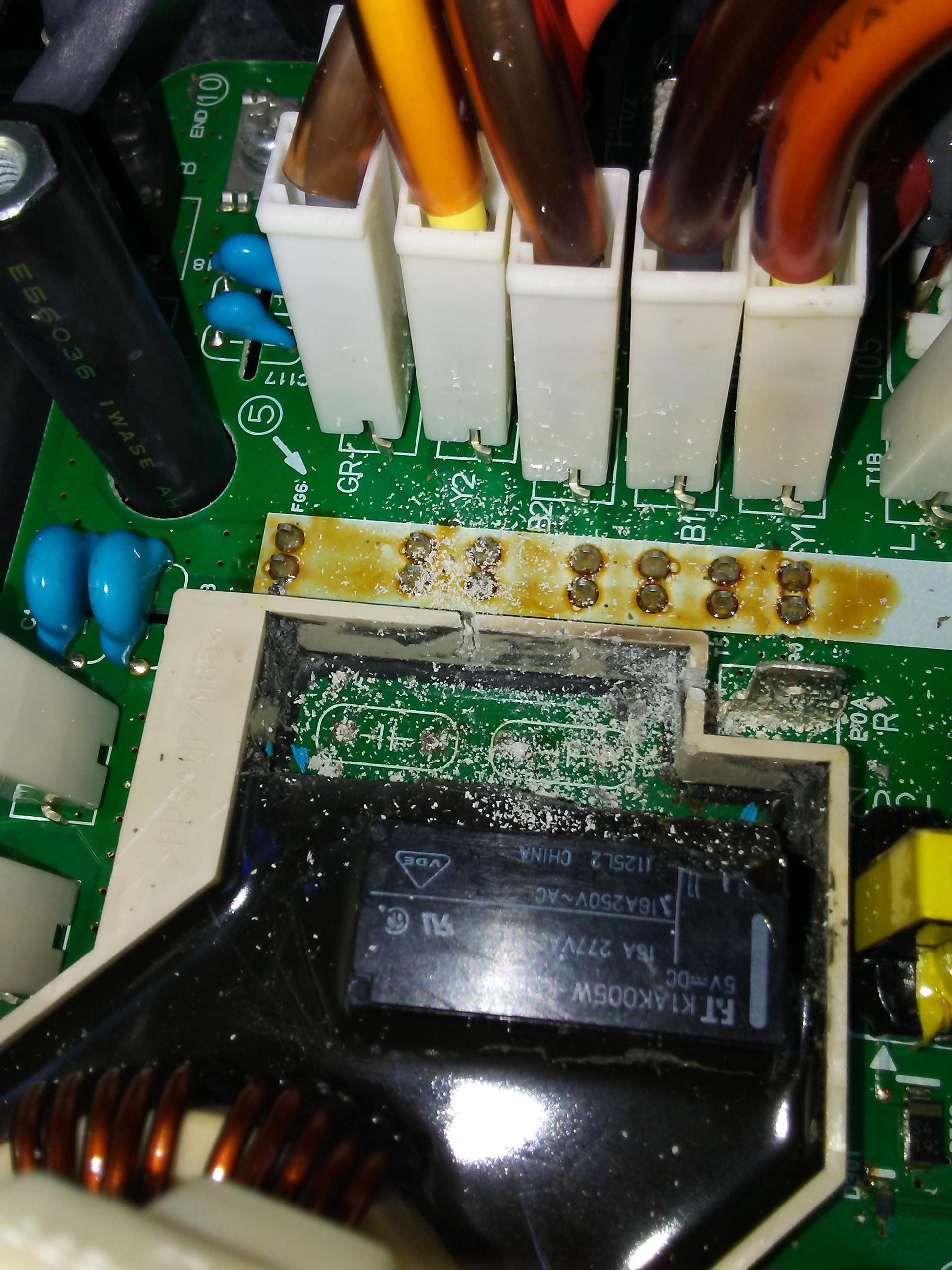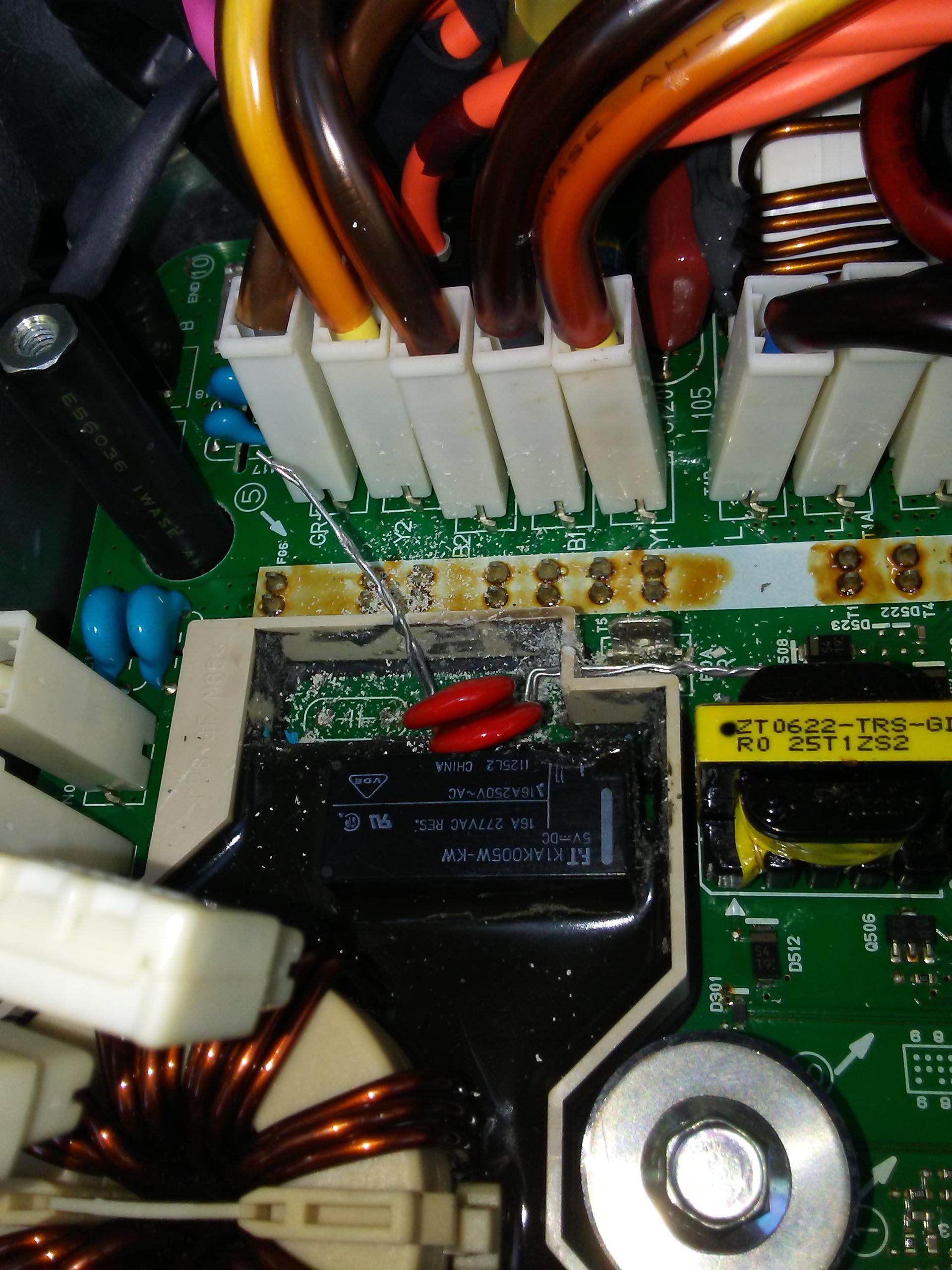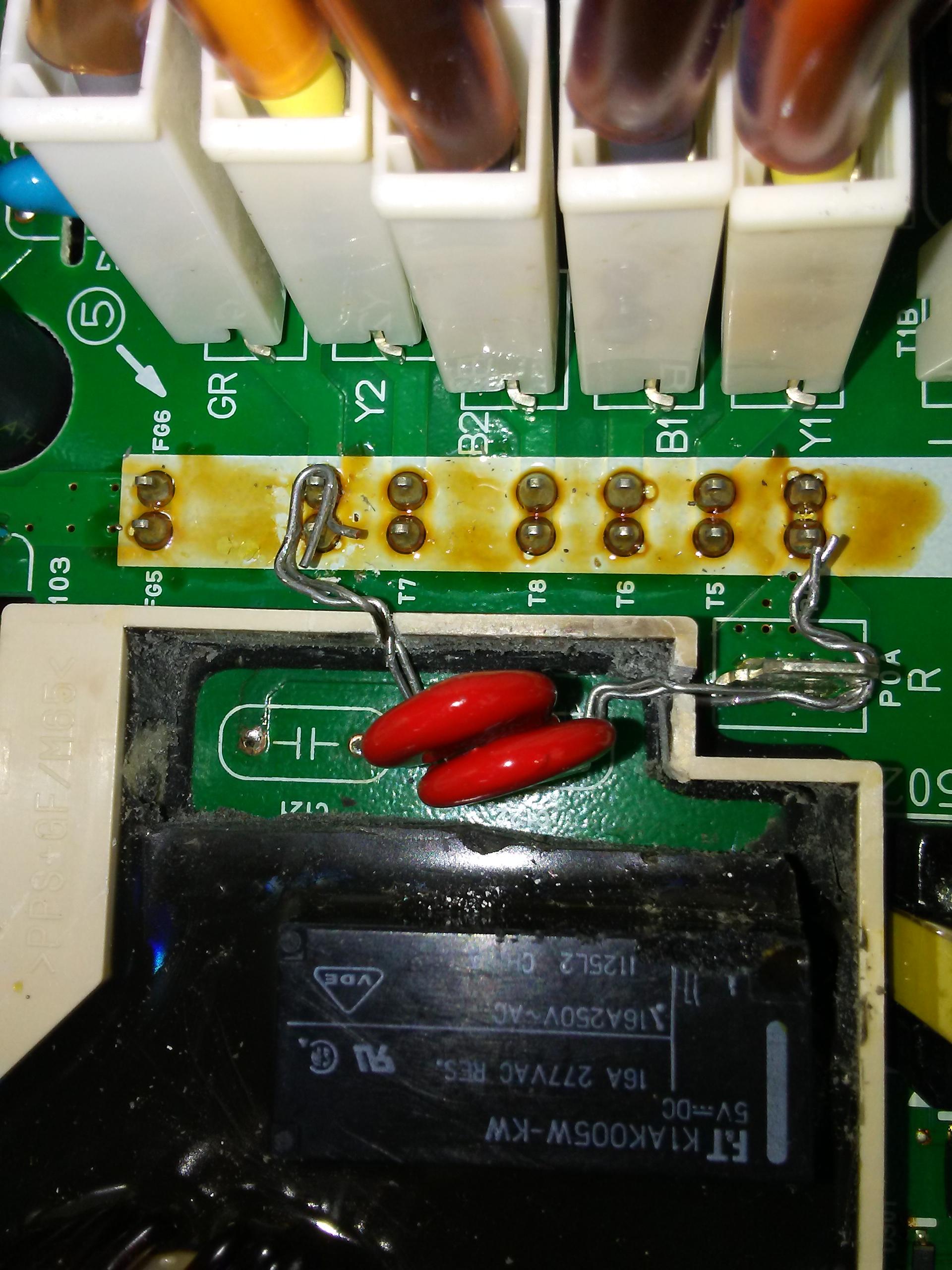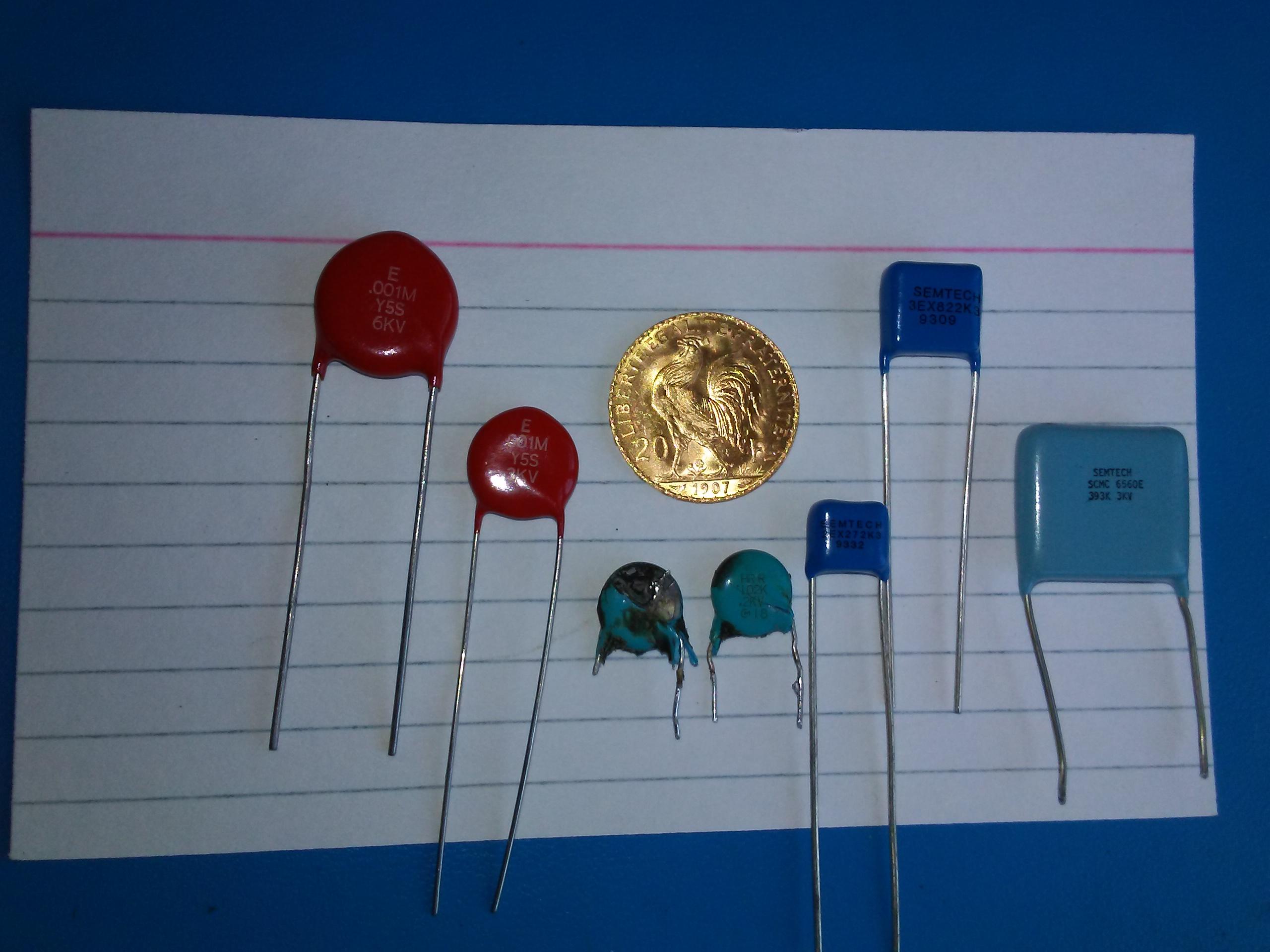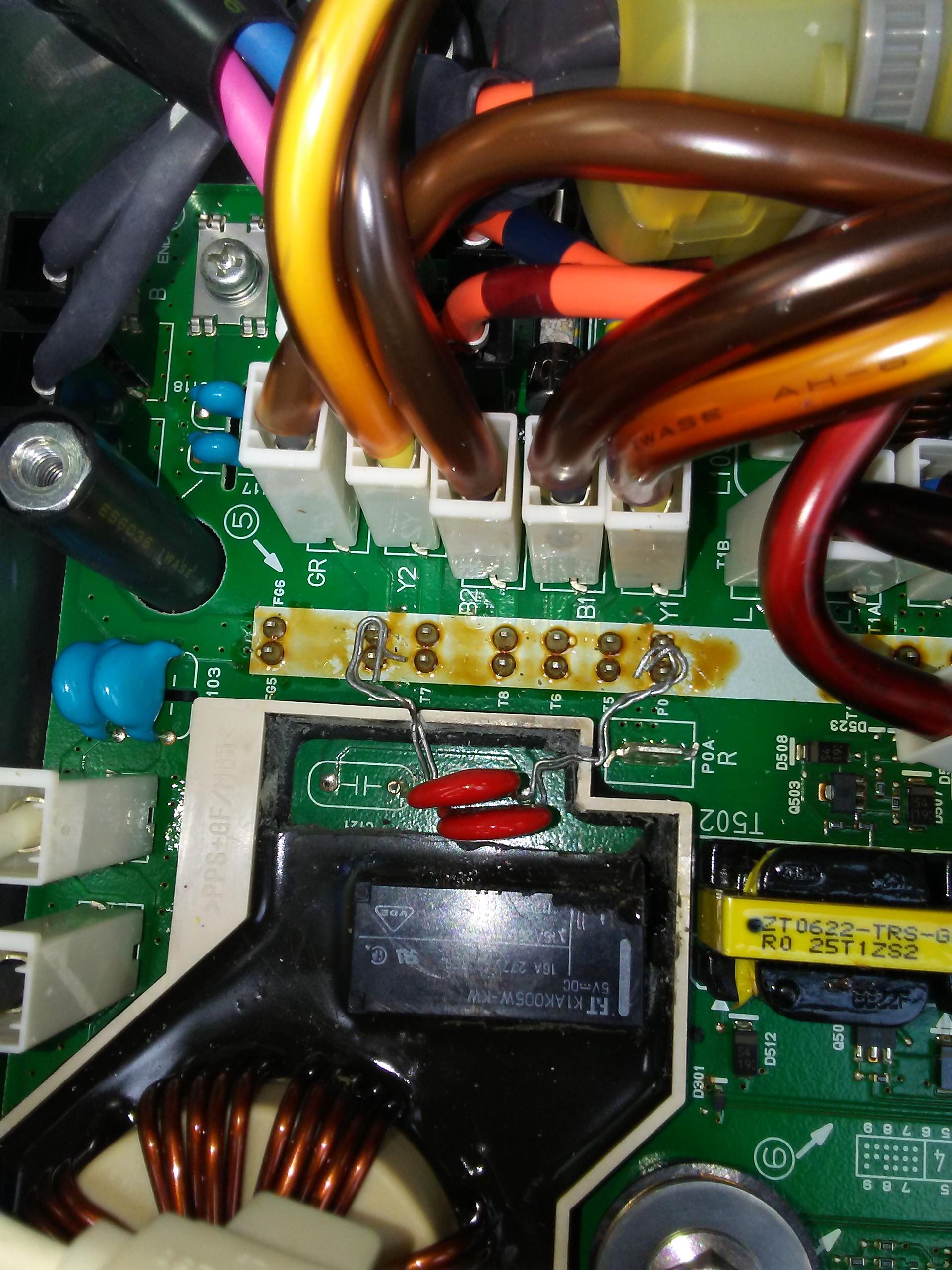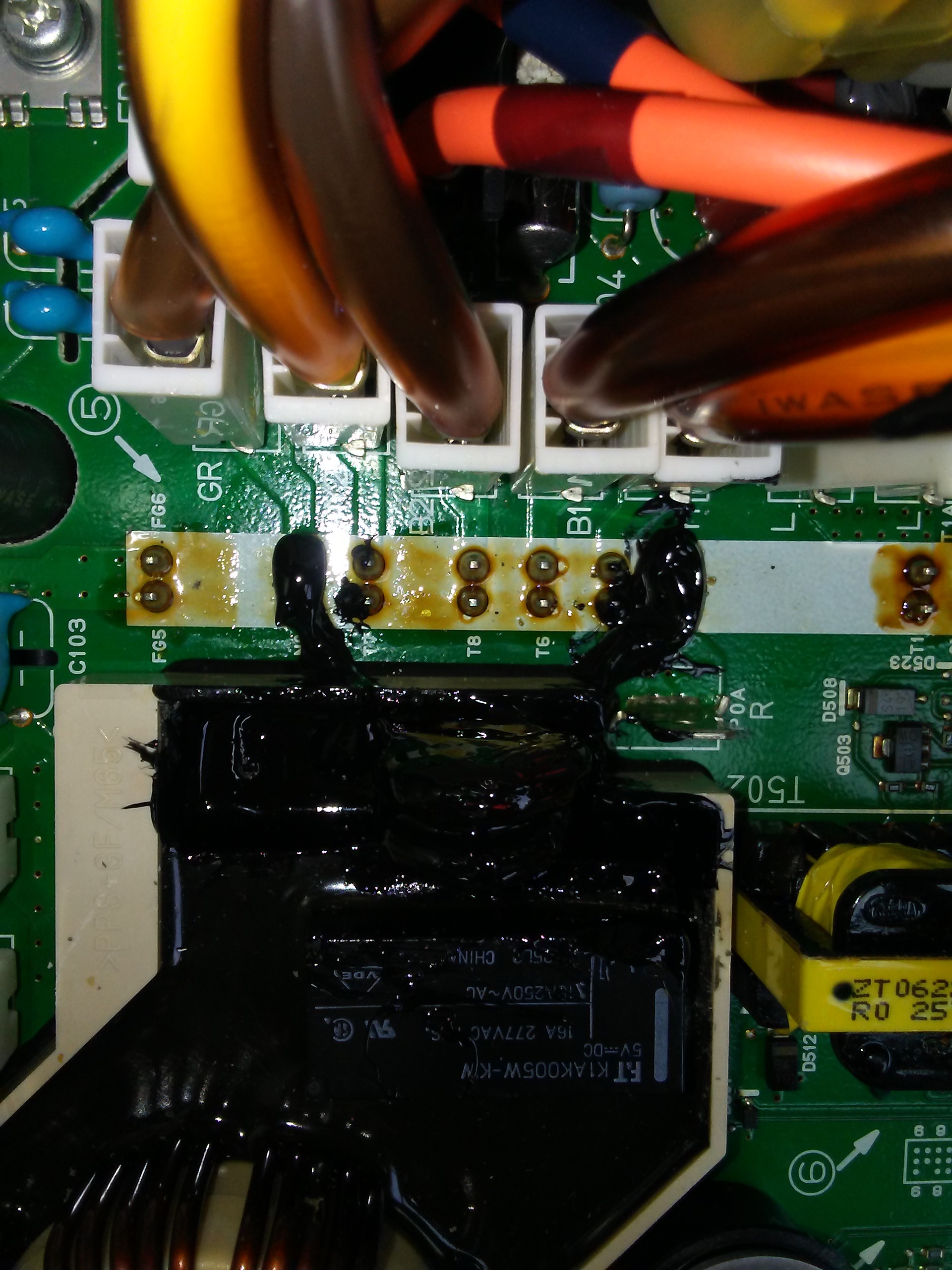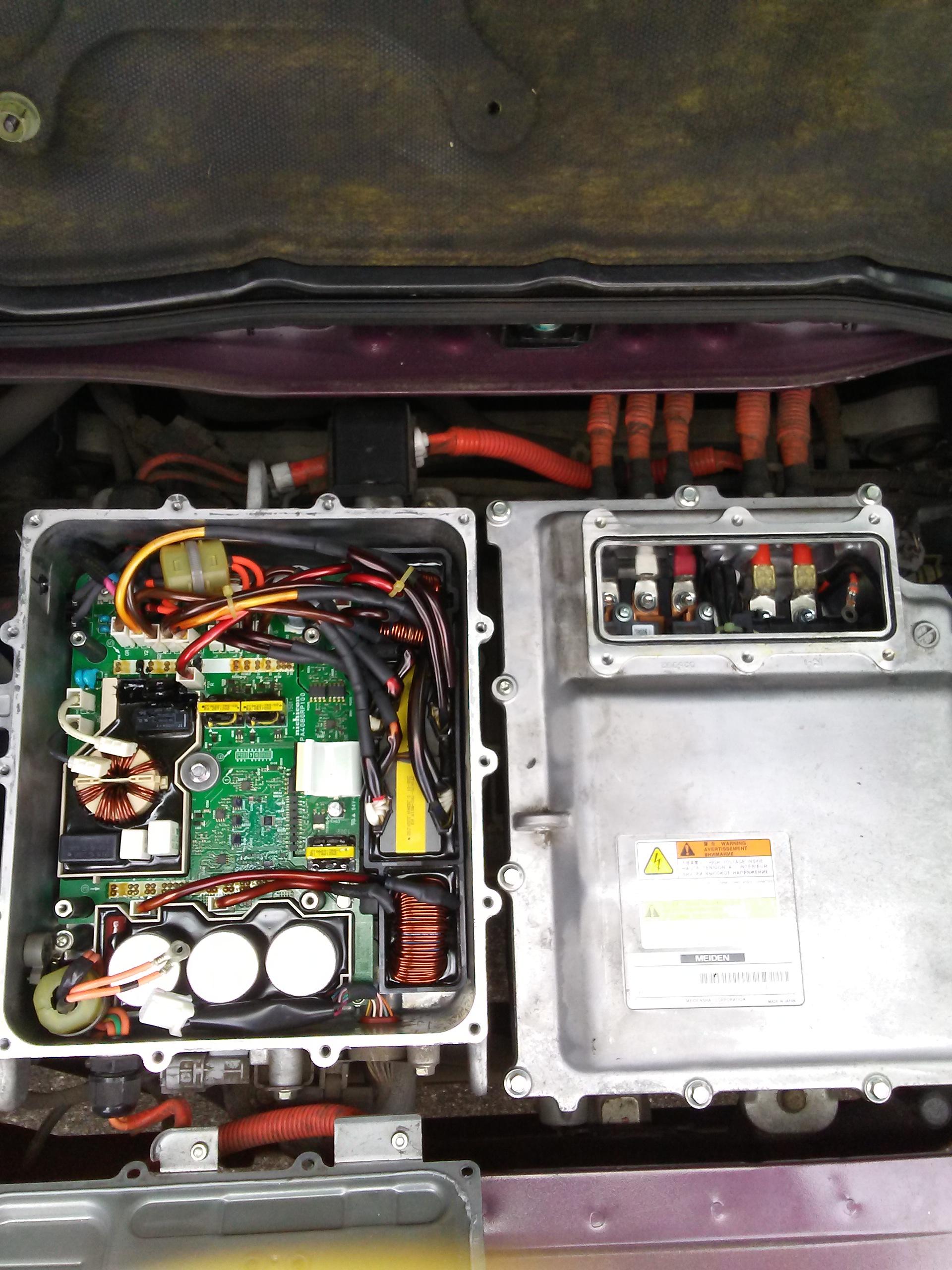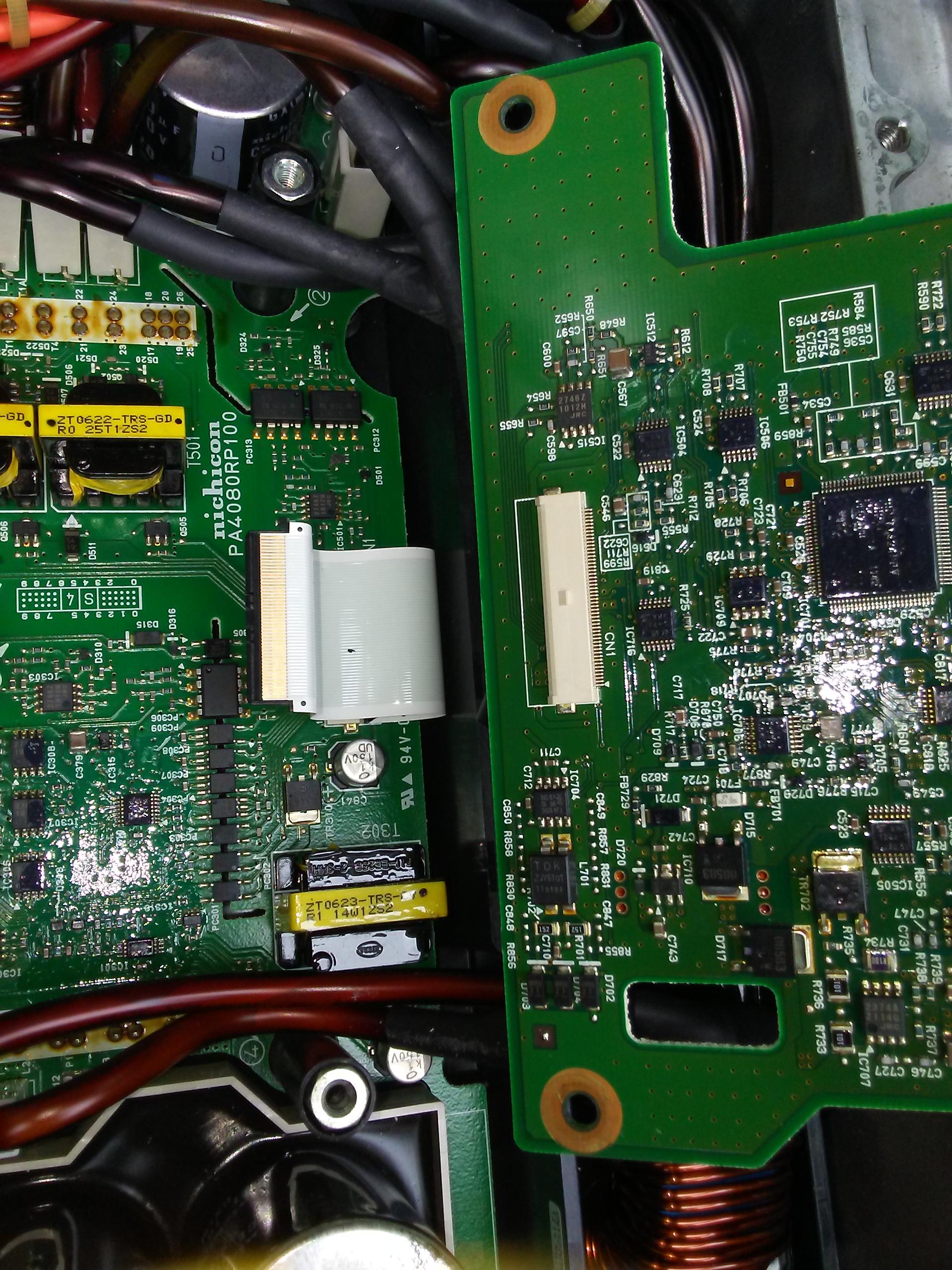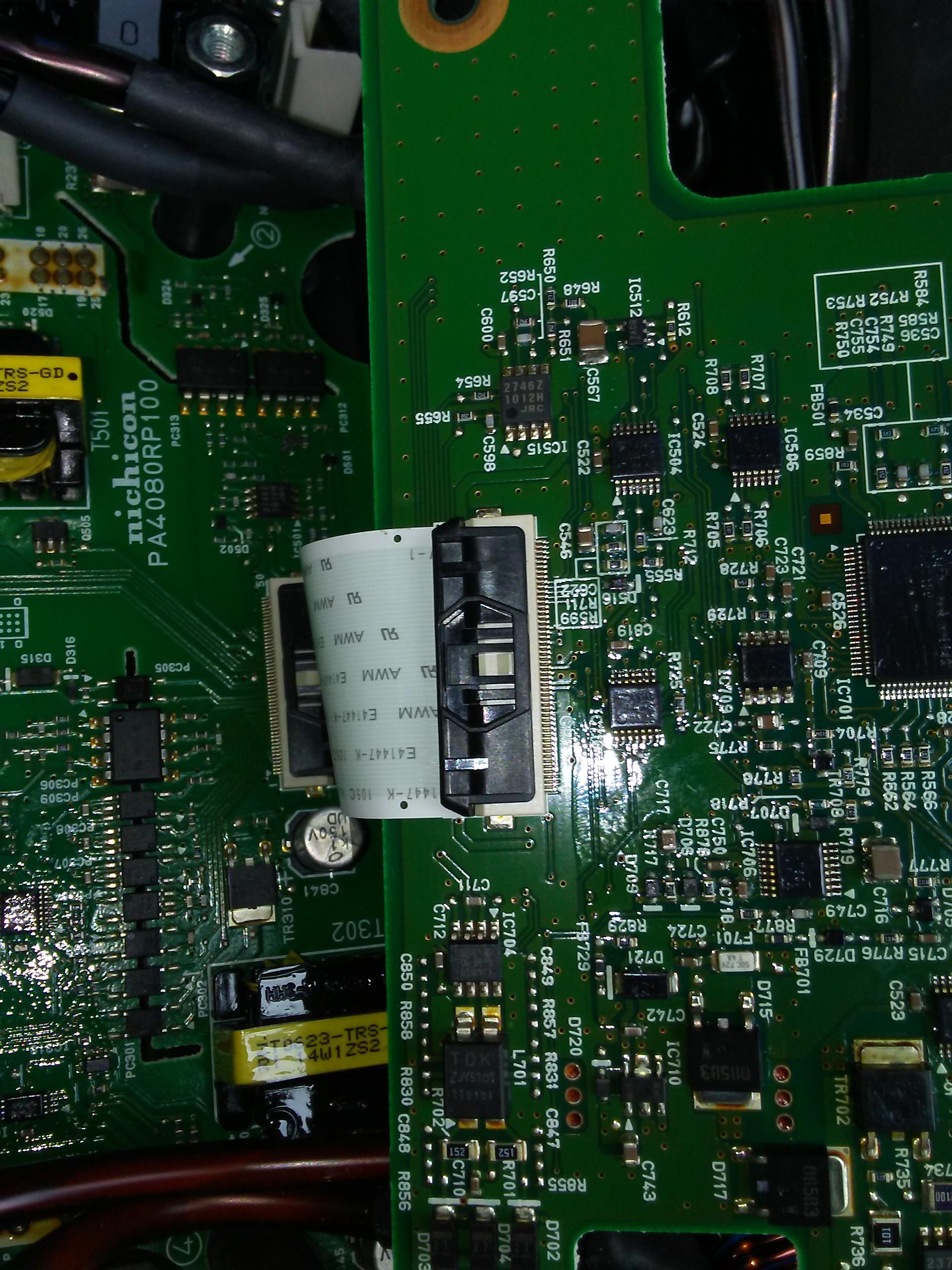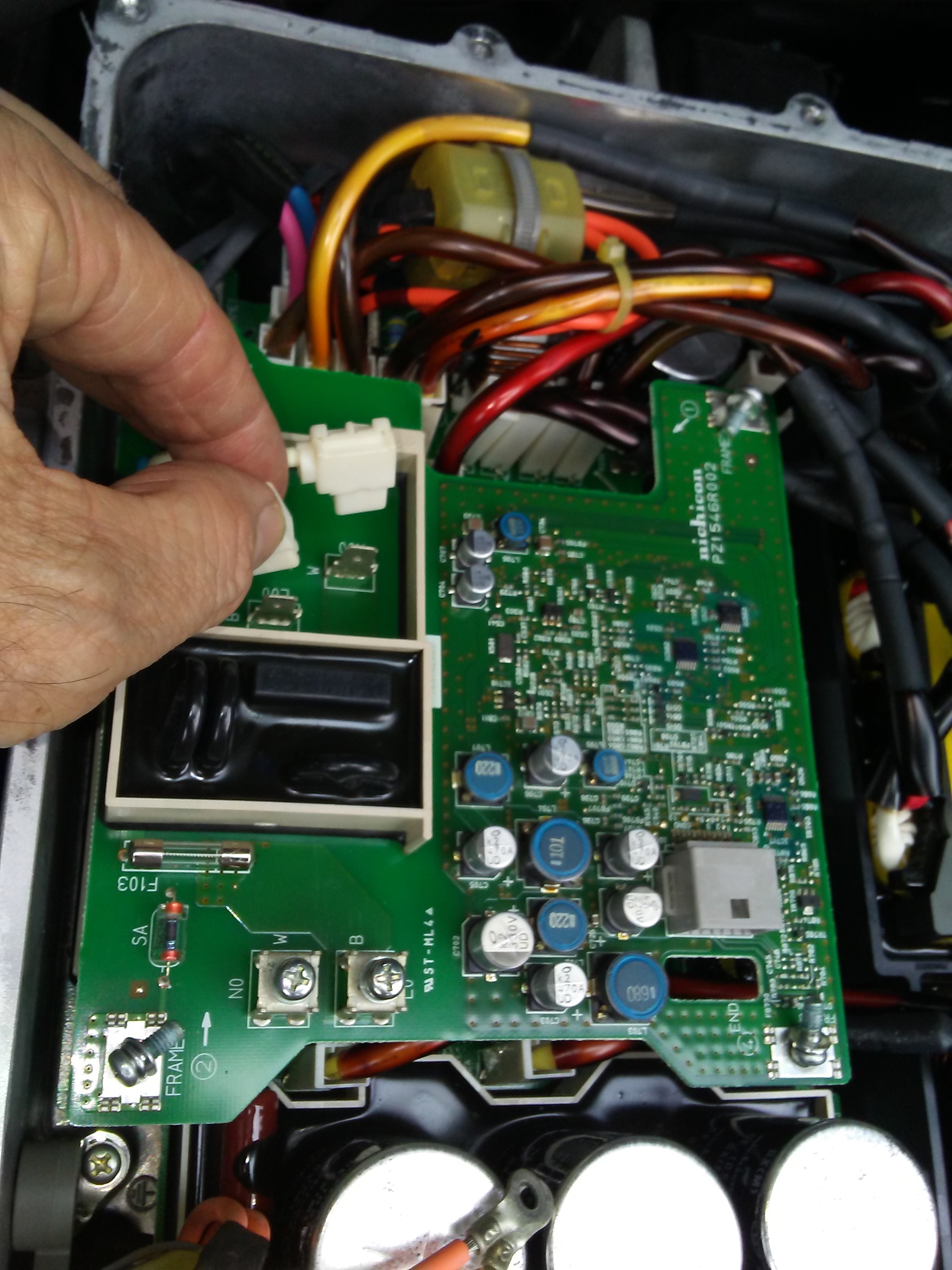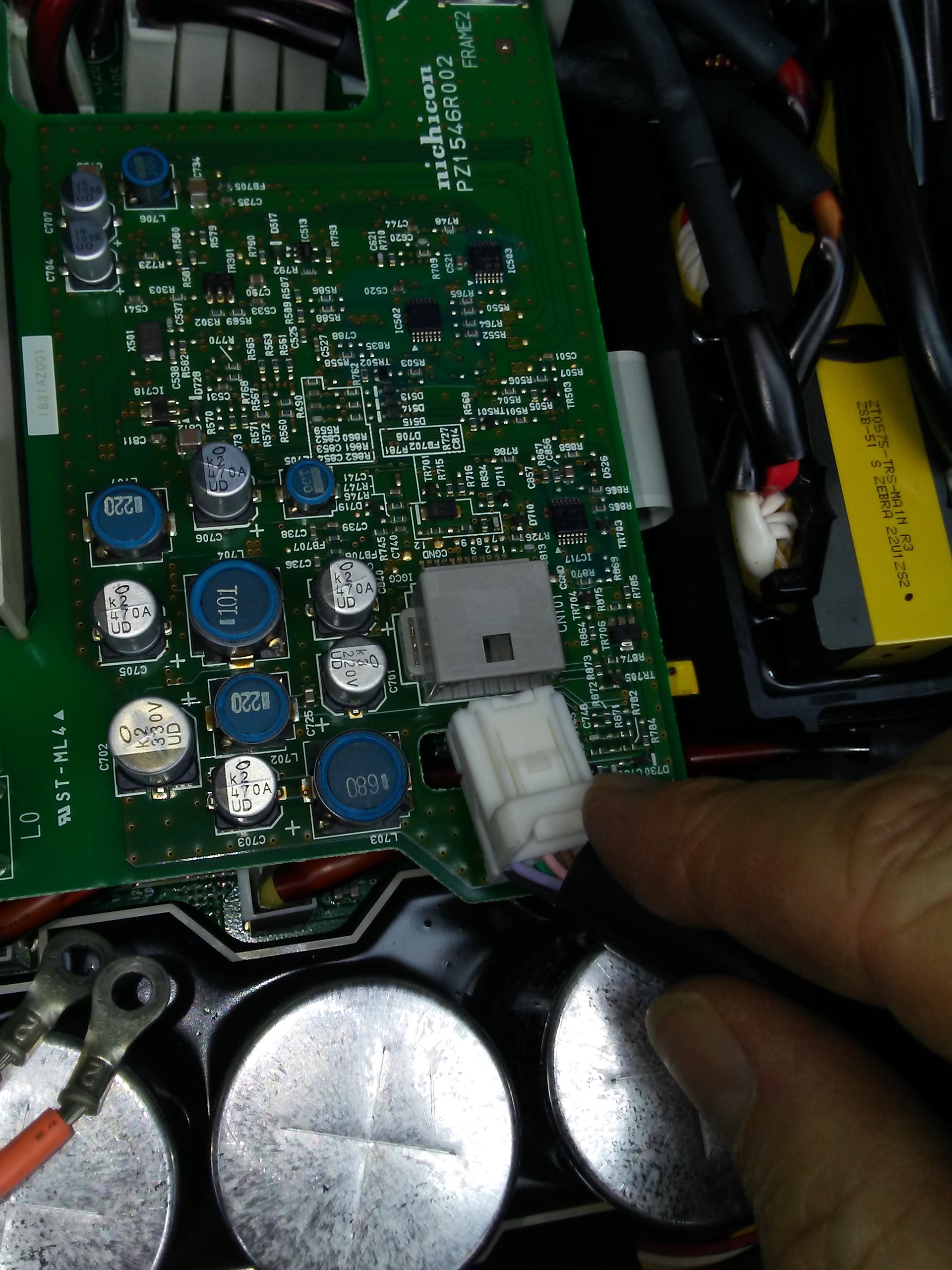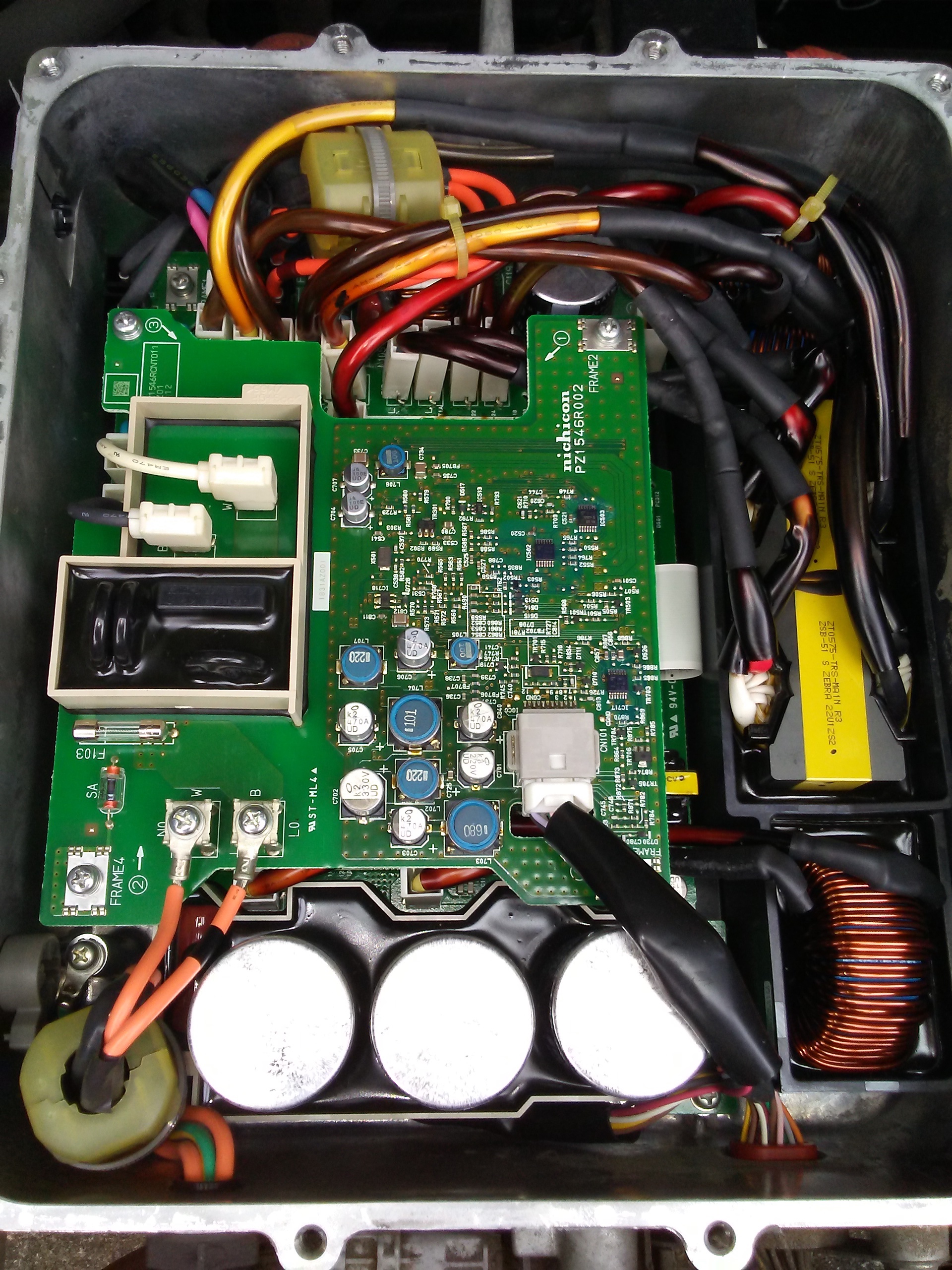Hello, since 2013 I am an enthusiastic i-Miev driver. Some weeks ago my DC-DC Converter had a damage like on page 33 in this forum. I followed the advices and the on-board Charger worked again. Thank you very much!!!!
http://i.imgur.com/gallery/pOPmH0J.jpg
After a few days, while my car was being charged, the fuse of our house was triggered by our high pressure cleaner and from this moment, the Charger does not work anymore. :shock:
The first thing I checked was the items I had changed before, but they were not damaged. Then I checked the 12V-battery. During the "ready"-phase the voltage was 14,4 V. So I think the DC-DC Converter is working.
When I connect the Charger, the loading process starts for a few seconds and then it is interrupted. In the cockpit I see the yellow car with an exclamation mark.
After separating the platine from the waffle board of the Charger, I see that four elements within the black material in the under right quadrant of the waffle board were blown off.
http://i.imgur.com/gallery/rPtszTv.jpg
https://i.imgur.com/gallery/CmZjSYK.jpg
My question to the specialists is now: Which components are there under the hard epoxytype potting compound and can I change these elements??????
Or better:
Does anybody have such a waffle board (which works) to sell??????
Thank you for your help...
http://i.imgur.com/gallery/pOPmH0J.jpg
After a few days, while my car was being charged, the fuse of our house was triggered by our high pressure cleaner and from this moment, the Charger does not work anymore. :shock:
The first thing I checked was the items I had changed before, but they were not damaged. Then I checked the 12V-battery. During the "ready"-phase the voltage was 14,4 V. So I think the DC-DC Converter is working.
When I connect the Charger, the loading process starts for a few seconds and then it is interrupted. In the cockpit I see the yellow car with an exclamation mark.
After separating the platine from the waffle board of the Charger, I see that four elements within the black material in the under right quadrant of the waffle board were blown off.
http://i.imgur.com/gallery/rPtszTv.jpg
https://i.imgur.com/gallery/CmZjSYK.jpg
My question to the specialists is now: Which components are there under the hard epoxytype potting compound and can I change these elements??????
Or better:
Does anybody have such a waffle board (which works) to sell??????
Thank you for your help...


































